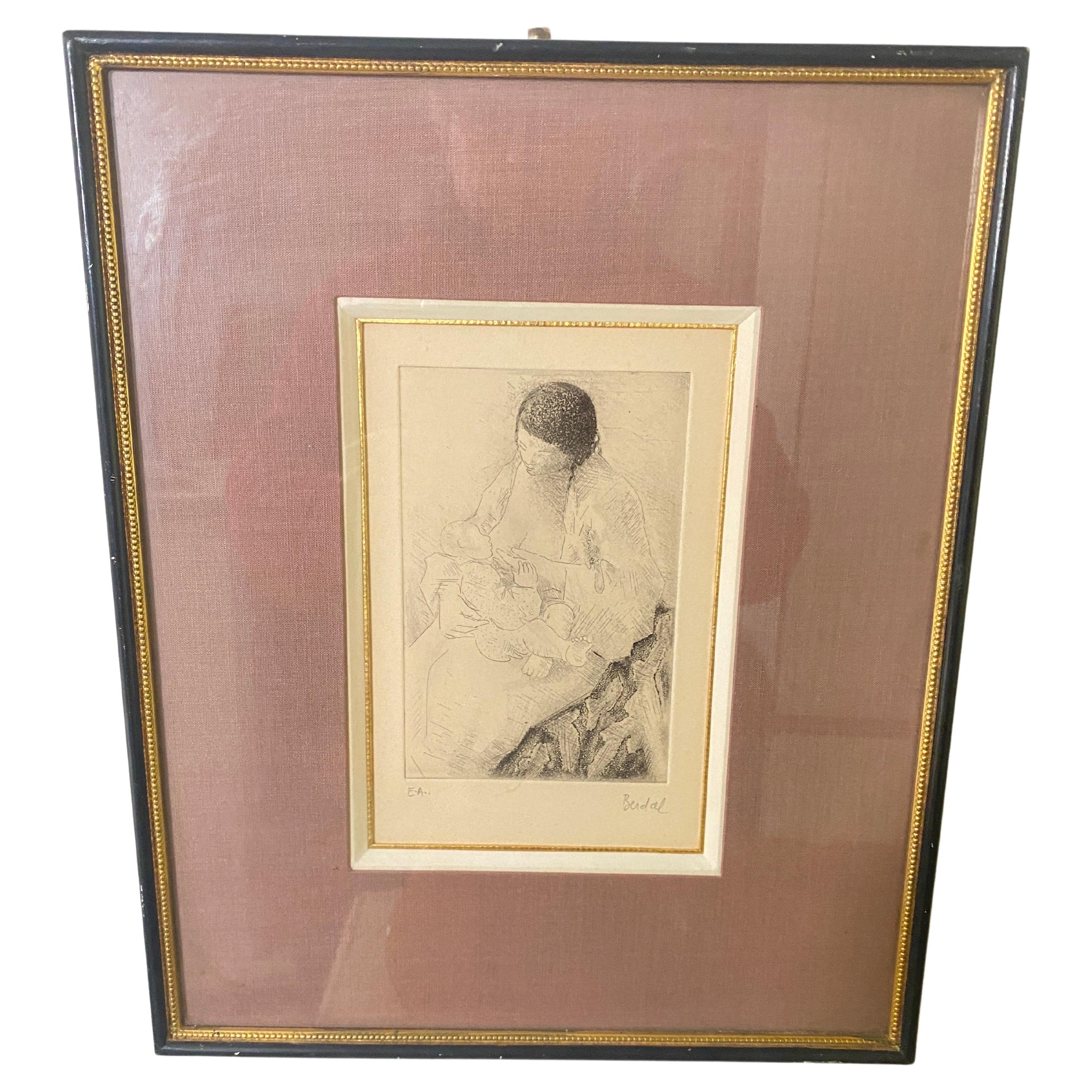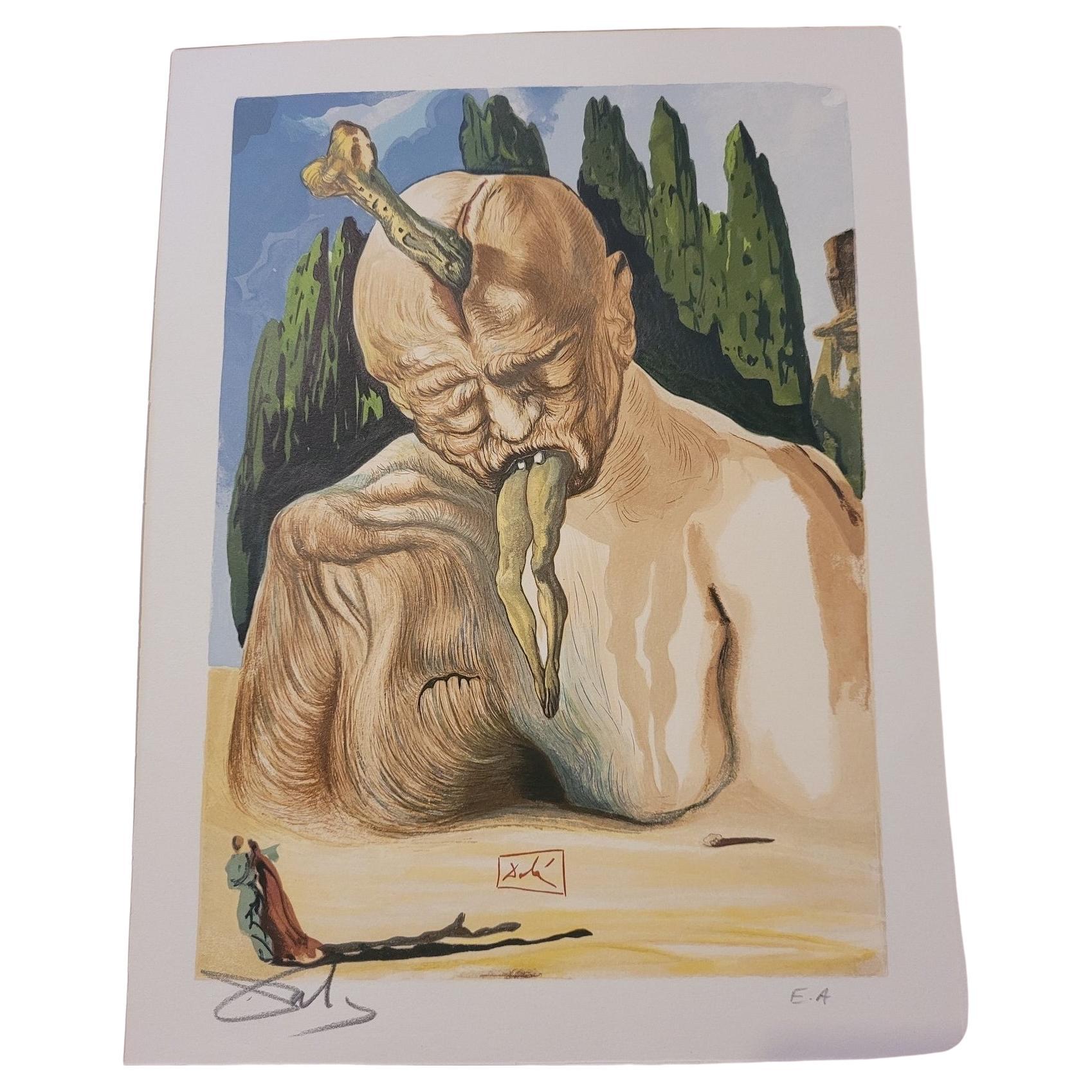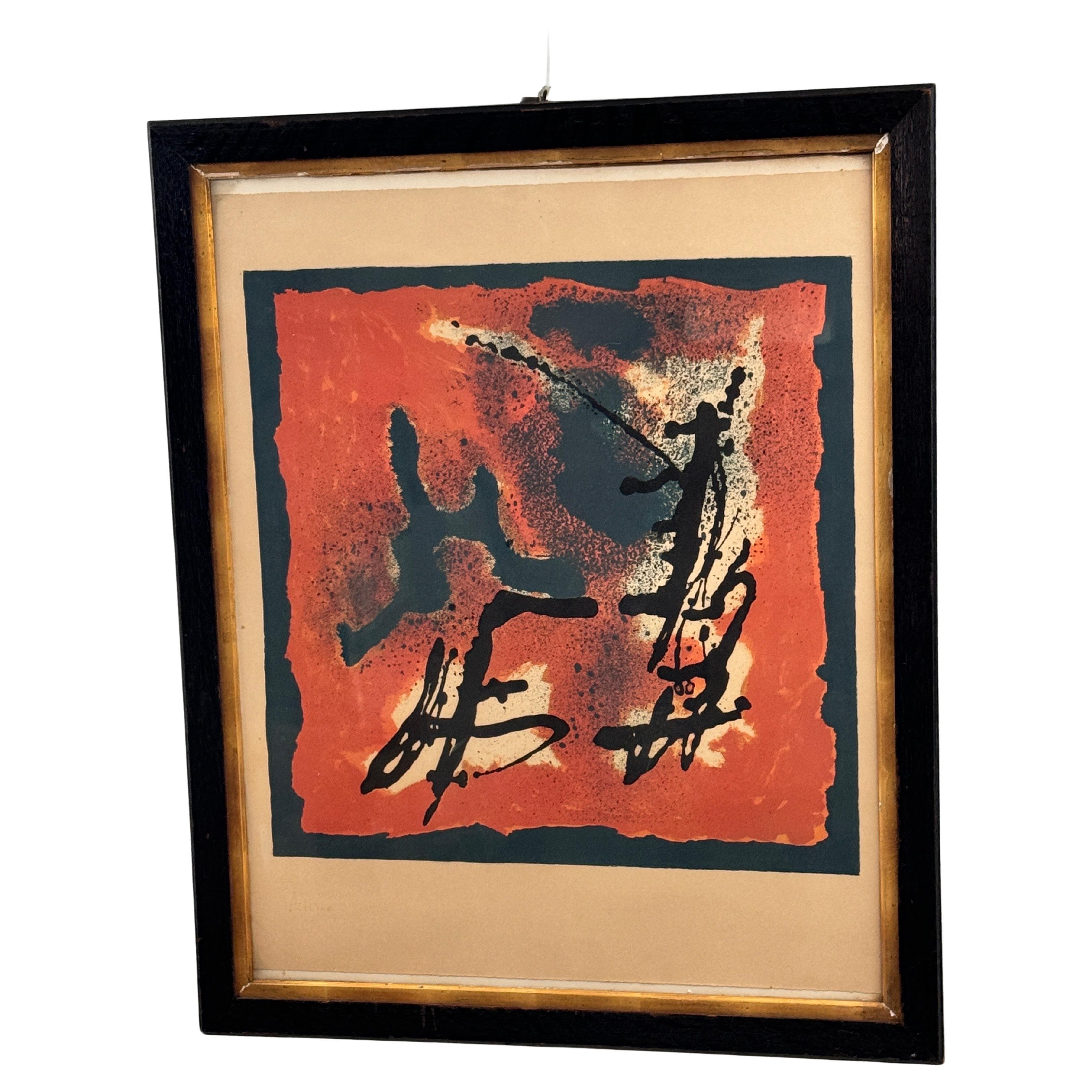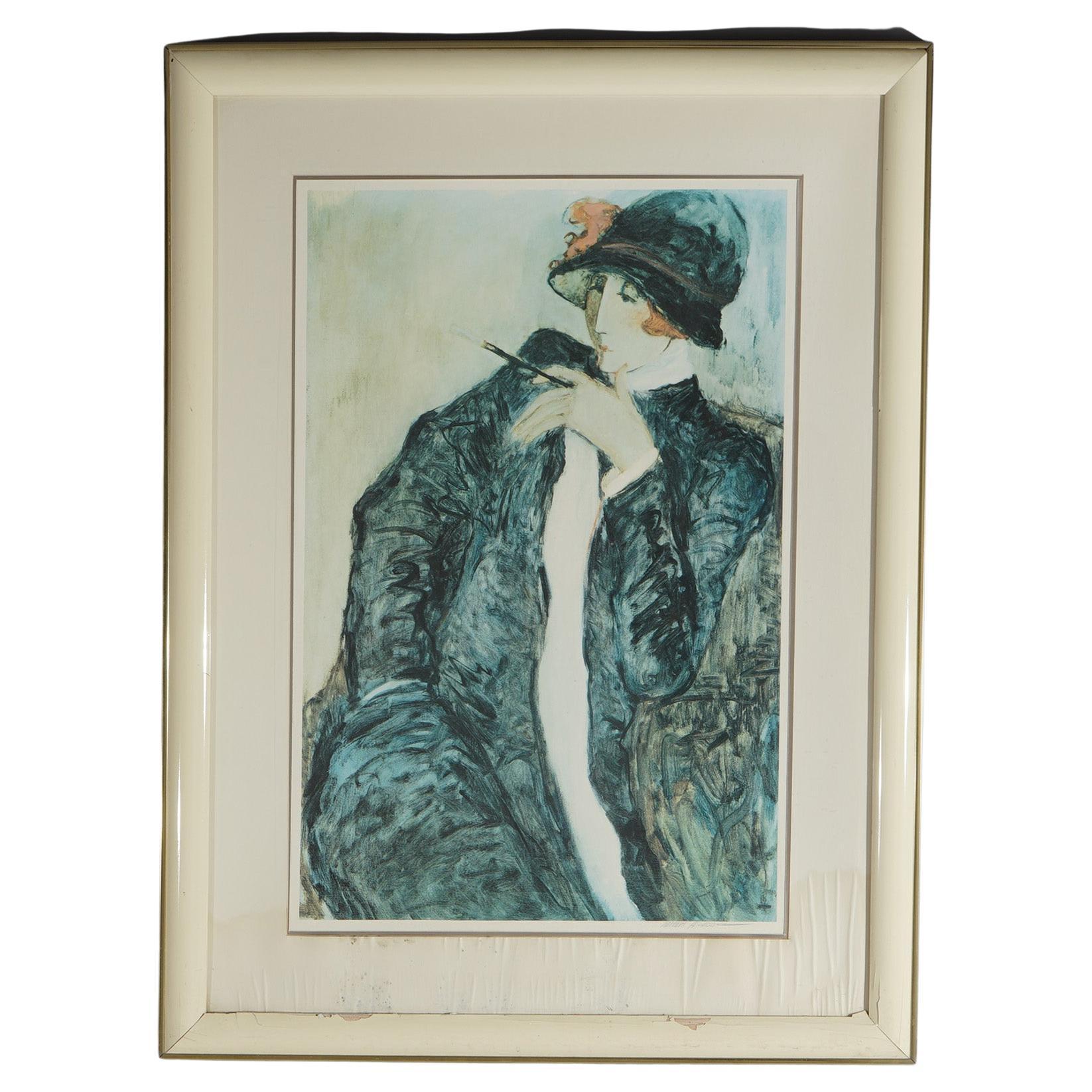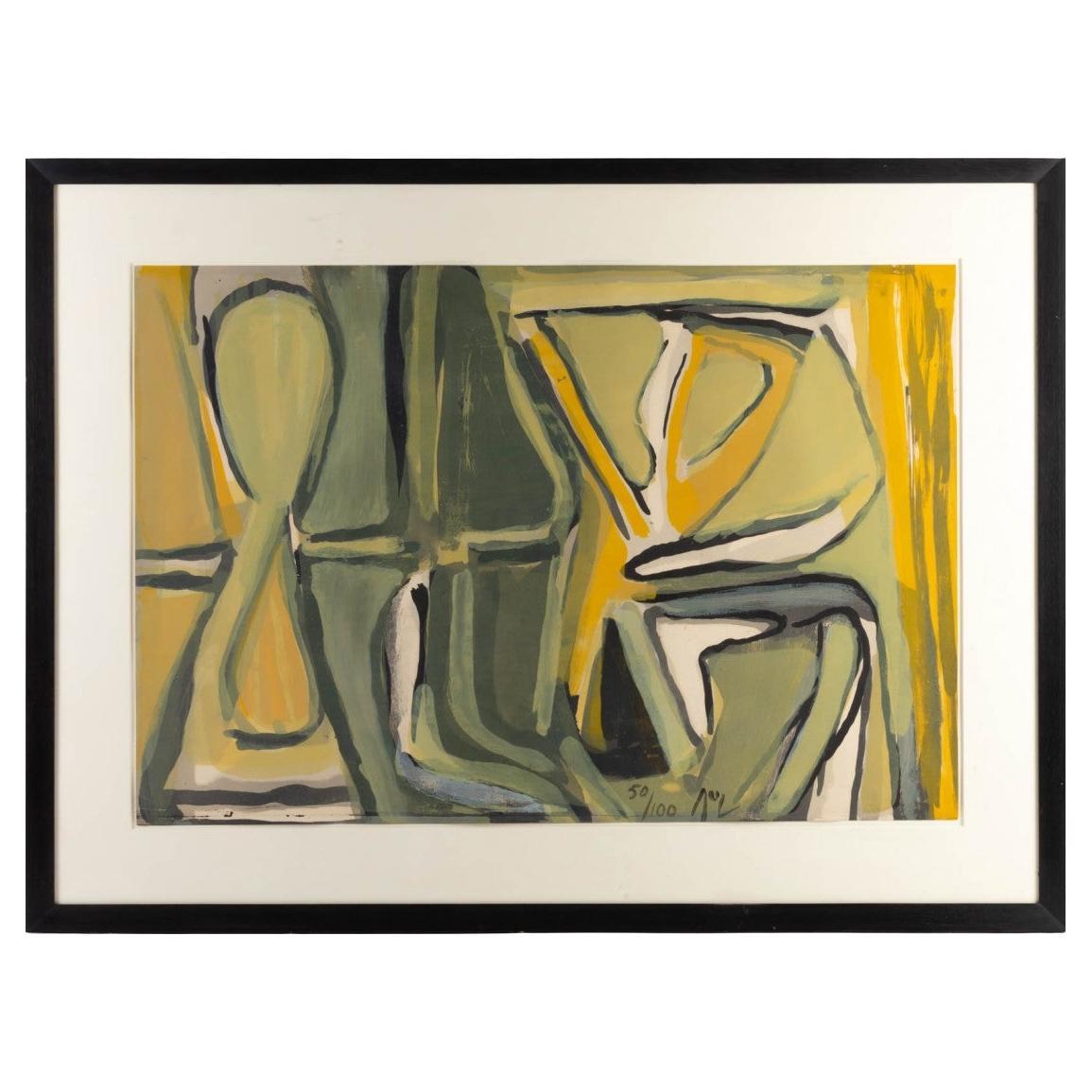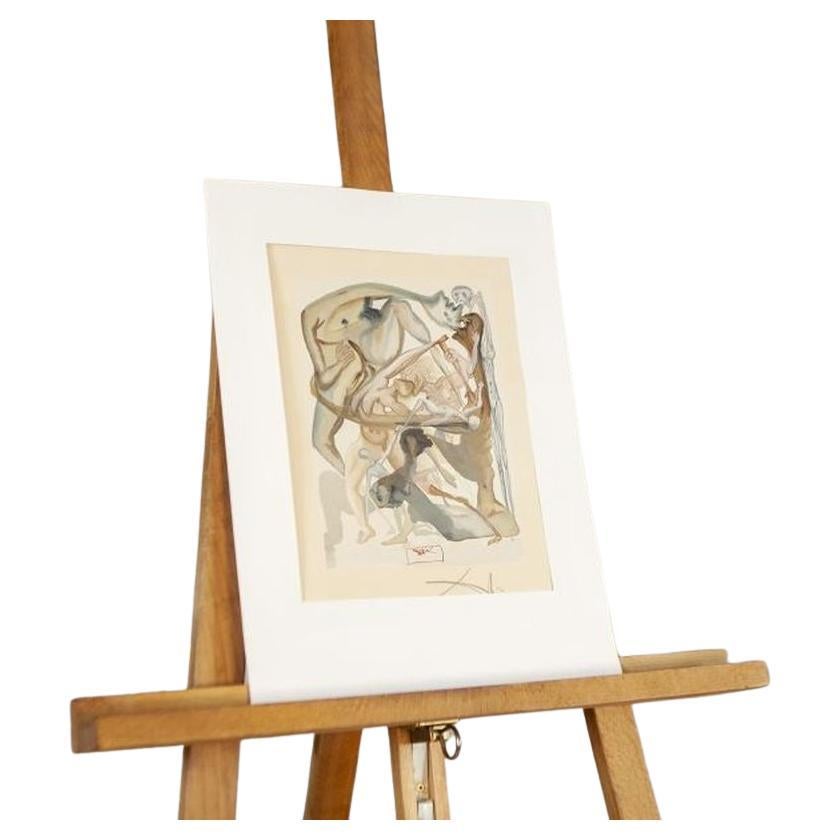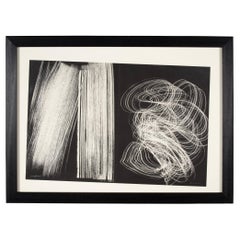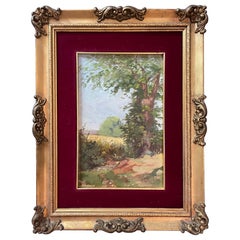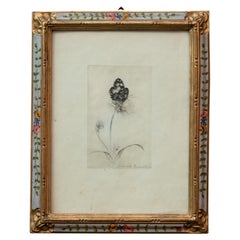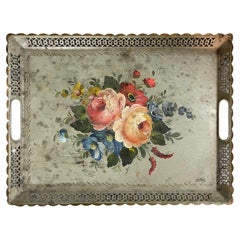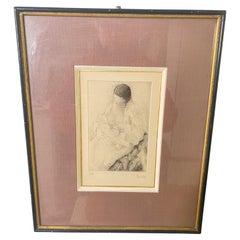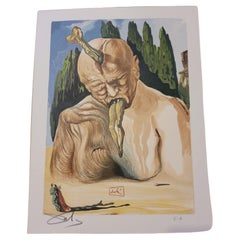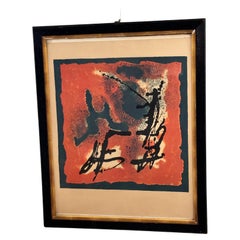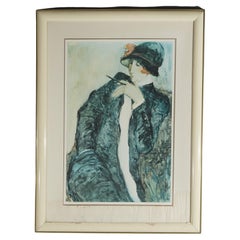Items Similar to 20th Century French Signed Belle Epoque Lithograph
Want more images or videos?
Request additional images or videos from the seller
1 of 6
20th Century French Signed Belle Epoque Lithograph
About the Item
Beautiful lithograph by the great Parisian Art Nouveau artist.
It depicts with rare effectiveness the unmatched atmosphere of the Belle Époque with a snobbish noblewoman sitting in her carriage driven by an impeccable chauffeur.
This artwork, never before on the market, comes from an important private collection and is beautified by an impressive antique frame in laquered wood, in almost perfect condition.
The painting is also protected by glass
Jean-Louis Boussingault (Paris 1883-1943) est un artiste peintre, graveur et illustrateur français. Il a pratiqué la pointe sèche, l'eau-forte et la lithographie. Born on 8 March 1883 in the 6th arrondissement of Paris, Jean-Louis Boussingault, who belonged to the family of the chemist Jean-Baptiste Boussingault, of whom he was the grandson, frequented the painters André Dunoyer de Segonzac, Luc-Albert Moreau, Valdo Barbey and André Villeboeuf in the 1900s: they were all students at the Académie Julian and then at the Académie de la Palette, where his teachers included Charles Guérin, Georges Desvallières and Pierre Laprade.
During the summer of 1908, this group of friends went on holiday to Saint-Tropez and painted together.
For a time, Dunoyer and Boussingault shared a studio in Paris.
He exhibited for the first time in 1909 at the Salon des Indépendants.
In May 1910, with André Dunoyer de Segonzac and Luc-Albert Moreau, he inaugurated the new Barbazanges gallery with an exhibition of drawings.
In 1914, Bernard Boutet de Monvel painted his portrait, and in June, he contributed to the Gazette du Bon Ton, depicting a dress by Paul Poiret, who commissioned him to create a major decorative ensemble for his shops. He called it the ‘new Constantin Guys’.
He also contributed to the weekly illustrated magazine Le Témoin, founded by Paul Iribe.
In 1919, he joined the Compagnie des arts français founded by Louis Süe and André Mare, where he met Dunoyer and Moreau: they belonged to the figurative movement of decorative art and worked on commission.
In September-October 1923, he exhibited at the van Deene gallery in Amsterdam with eleven other artists.
His death on 17 May 1943 at the Clinique Oudinot in the 7th arrondissement, in the middle of the war, did not go unnoticed, as a tribute exhibition was held from 10 March to 23 April 1944 at the Musée des Arts Décoratifs. He is buried in the Père-Lachaise cemetery.
Dimensions are frame included
.
- Creator:Jean-Louis Boussingault (Artist)
- Dimensions:Height: 11.23 in (28.5 cm)Width: 9.26 in (23.5 cm)Depth: 0.79 in (2 cm)
- Style:Belle Époque (Of the Period)
- Materials and Techniques:
- Place of Origin:
- Period:
- Date of Manufacture:1910 ca.
- Condition:Wear consistent with age and use. Minor fading.
- Seller Location:Roma, IT
- Reference Number:1stDibs: LU4827244287212
About the Seller
5.0
Platinum Seller
Premium sellers with a 4.7+ rating and 24-hour response times
Established in 2005
1stDibs seller since 2019
90 sales on 1stDibs
Typical response time: 4 hours
- ShippingRetrieving quote...Shipping from: Rome, Italy
- Return Policy
Authenticity Guarantee
In the unlikely event there’s an issue with an item’s authenticity, contact us within 1 year for a full refund. DetailsMoney-Back Guarantee
If your item is not as described, is damaged in transit, or does not arrive, contact us within 7 days for a full refund. Details24-Hour Cancellation
You have a 24-hour grace period in which to reconsider your purchase, with no questions asked.Vetted Professional Sellers
Our world-class sellers must adhere to strict standards for service and quality, maintaining the integrity of our listings.Price-Match Guarantee
If you find that a seller listed the same item for a lower price elsewhere, we’ll match it.Trusted Global Delivery
Our best-in-class carrier network provides specialized shipping options worldwide, including custom delivery.More From This Seller
View AllHans Hartung 1970s Signed and Numbered Black and White Lithograph
By Hans Hartung
Located in Roma, IT
Hans Hartung 1970s signed and numbered
signed and numbered colour lithograph
Available one pair
Title "Farandole"
Signed lower right
Numbered lower left XXVII/LXXV
Table 5, editio...
Category
Vintage 1970s French Modern Prints
Materials
Glass, Wood, Paper
20th Century Italian Signed Landscape Painting
By Filiberto Petiti
Located in Roma, IT
20th Century Italian Signed Landscape
Beautiful and important painting by the great artist born in Turin, but of the Roman school, Filiberto Petiti ...
Category
Early 20th Century Italian Romantic Paintings
Materials
Wood
20th Century Signed Still Life Pencil Drawing
Located in Roma, IT
Beautiful, evocative Pencil Drawing
Still Life with Flowers and Butterfly
Early 20th century
Signed at lower right
The painting is embellished by a beautiful nineteenth-century la...
Category
Vintage 1920s Italian Art Nouveau Paintings
Materials
Wood, Paper
20th Century French Painted Metal Tray
Located in Roma, IT
Beautiful and important French hand-painted metal centrepiece exemplary of ‘L'Art de la Table’.
It features a beautiful openwork frame on the edges and a wonderful polychrome floral ...
Category
Early 20th Century French Art Nouveau Centerpieces
Materials
Metal
1970s Modern Antonietta Raphaël Signed Etching
By Antonietta Raphaël
Located in Roma, IT
Colour etching “Prova d’autore” signed localised and dated ‘Raphael Roma “70”.
It depicts in his unmistakable style a couple pictured in an intimate but discreet pose.
Antonietta Raphaël, the wife of Mario Mafai and co-founder of the Roman School, is here at the highest level of her artistic expression.
This artwork, never before on the market, comes from an important private collection and is beautified by an impressive original frame in silvered wood, in almost perfect condition.
Dimensions are frame included
The painting is also protected by glass
Antonietta Raphaël (1895 – 5 September 1975) was an Italian sculptor and painter of Jewish heritage and Lithuanian birth, who founded the Scuola Romana (Roman School) movement together with her husband Mario Mafai.
She was an artist characterised by a profound anti-academic conviction, also affirmed by her sculptures which, especially after World War II, dominated her output.
They highlighted the tender and vibrant carnality present in stone, with works such as Miriam dormiente (Sleeping Miriam) and Nemesis.
A rabbi's daughter, Raphael moved to London with her mother after her father's death.
There she attended the British Museum, and came to know Jacob Epstein and Ossip Zadkine, the renowned French sculptor of Russian origin and member of the Expressionist movement.
However, Antonietta in those days concentrated on studying music, and eventually graduated in piano at the Royal Academy of Music and teaching solfeggio in the East End.
At her mother's death in 1919, she moved to Paris and in 1924 to Rome. In 1925 Antonietta attended the Accademia di Belle Arti, befriended artist Mario Mafai and went to live with him, in a long-lasting relationship. They had three daughters: Miriam (1926), a journalist, partner of Communist politician Giancarlo Pajetta; Simona (1928) member of the Italian Senate and author; and Giulia (1930), a scenographer and costume designer.
In 1927, Raphael and Mafai moved to an apartment in via Cavour...
Category
Mid-20th Century Italian Mid-Century Modern Prints
Materials
Glass, Wood, Paper
1980s Signed Mario Schifano Artwork on Paper
By Mario Schifano
Located in Roma, IT
Materic silkscreen print “Ondate di gelo” (Frost Waves) by Mario Schifano.
Signature and numbering in pencil on front side.
Dry stamp of the artist on front.
Edition F.C. (Not for sale) 23/30. Framed work.
The artwork for sale is part of the collection 'Best Seller: 31 graphic works by Mario Schifano' edited by Edizioni Torcular Edition on handmade paper with Torcular watermark by Cartiera Magnani of Pescia Printer: Egiziano Piersantini
This artwork, never before on the market, comes from a private collection and is beautified by an impressive original frame in natural wood, in almost perfect condition.
The painting is also protected by glass
Every item of our Gallery, upon request, is accompanied by a certificate of authenticity issued by Sabrina Egidi official Expert in Italian furniture for the Chamber of Commerce of Rome and for the Rome Civil Courts.
Mario Schifano (Homs 1934 - 1998) was an Italian painter and filmmaker.
Together with Franco Angeli and Tano Festa he represented a fundamental point of Italian and European Pop Art.
Perfectly integrated in the international cultural scene of the 1960s, he was reputed to be a prolific, exuberant and drug-addicted artist.
A keen student of new painting techniques, he was among the first to use computers to create works and was able to process images from the computer and transfer them onto emulsified canvases.
Mario Schifano was born in Italian Libya and after the end of the war returned to Rome where, due to his restless personality, he left school early to follow in his father's footsteps who worked at the Etruscan museum of Villa Giulia as an archaeologist and restorer.
Thanks to this experience, he approached art, initially producing works that were influenced by Informal Art.
His first solo exhibition was at the Galleria Appia Antica in Rome in 1959.
In the late 1950s, he participated in the artistic movement Scuola di Piazza del Popolo together with artists such as Francesco Lo Savio, Mimmo Rotella, Giuseppe Uncini, Giosetta Fioroni, Tano Festa and Franco Angeli.
The group met at Caffè Rosati, a Roman café then frequented by Pier Paolo Pasolini, Alberto Moravia and Federico Fellini, among others, and located in Piazza del Popolo, from which they took their name.
In 1960, the group's works were exhibited in a group show at Galleria La Salita.
In 1961 he exhibited in a solo show at Galleria La Tartarugadi Plinio De Martiis in Rome.
In the meantime, he had met, among others, his future lover Anita Pallenberg at the Caffè Rosati, with whom he made his first trip to New York in 1962, where he came into contact with Andy Warhol and Gerard Malanga at the Factory.
During this period he participated in the New Realists exhibition at the Sidney Janis Gallery, a group show that included most of the young artists of Pop art and Nouveau Réalisme, including Andy Warhol and Roy Lichtenstein.
He then had the opportunity to participate in the New York social scene, which led to his first experiments with LSD.[6]
On his return from New York, after participating in exhibitions in Rome, Paris and Milan, he took part in the XXXII International Art Exhibition in Venice in 1964.
During this period, his paintings defined as 'Anemic Landscapes', in which it is memory that evokes the representation of nature with small details or allusive inscriptions, and the reinterpretations of art history that later led to his famous pictorial works on futurism appear in embryo.
In Rome, he met and frequented Marco Ferreri and Giuseppe Ungaretti to whom, already in his 80s, he offered an evening at Peyote.
But one of the acquaintances of this period that most influenced him was that with Ettore Rosboch, with whom he formed a deep friendship, based on a shared passion for music. In those years, also thanks to their constant trips to London, the two became friends with the Rolling Stones, to whom they introduced Anita Pallenberg, who in 1965 began a relationship with Brian Jones, and years later became Keith Richards' partner.
In 1969, the flat in Piazza in Piscinula in Rome that then belonged to Schifano was used by Ferreri as the set for the film Dillinger is Dead, on the walls of which some of the artist's paintings can be seen.
In 1969, the Rolling Stones dedicated the song Monkey Man to Mario Schifano.
In 1971 some of his paintings were included by Achille Bonito Oliva in the exhibition Vitalità nel negativo nell'arte italiana 1960/70.
Many of his works, the so-called 'monochromes', present only one or two colours, applied on wrapping paper glued on canvas.
The influence of Jasper Johns was manifested in the use of numbers or isolated letters of the alphabet, but in Schifano's way of painting analogies can be traced to the work of Robert Rauschenberg.
In a painting from 1960, one can read the word 'no' painted with drips of colour in large capital letters, as in a wall graffiti.
The influence of Pop art can be seen in all the artistic production of Mario Schifano, who was fascinated by new technologies, advertising, music, photography and experimentation.
In particular, the artist's closest works to Pop Art are those of the 1980s.
Among the most important works of this period are the Propagande, a series dedicated to advertising brands (Coca-Cola and Esso) in which we have a clear example of the conveyance of commonly used and easily recognisable images quoted in multiple ways or details of them, bicycles, flowers and nature in general (among the most famous series are the Paesaggi anemici, Vedute interrotte, L'albero della vita...
Category
Vintage 1980s Italian Mid-Century Modern Prints
Materials
Canvas, Glass, Wood
You May Also Like
Engraving signed France 20th Century a Women with a child
By Alex Berdal
Located in Auribeau sur Siagne, FR
Engraving signed France 20th Century a Women with a child
"Epreuve d'artiste" 20th Century
Category
20th Century French Prints
Materials
Wood, Paper
"a Devil Logician", Lithograph, Dali, 20th Century
By Salvador Dalí
Located in MARSEILLE, FR
"A Logician Devil": color lithograph illustrating canto XXVII of hell from Dante's Divine Comedy
It is signed Dali lower left, and is justified EA on the right
Good condition, in a...
Category
20th Century Italian Other Prints
Materials
Paper
Engraving by Jackson Paul Ackermann signed France 20th Century
Located in Auribeau sur Siagne, FR
Engraving by Jackson Paul Ackermann signed France 20th Century
Category
20th Century French Prints
Materials
Wood, Paper
Vintage Art Deco Style Lithograph Signed Barbara Wood 20th C
Located in Big Flats, NY
A vintage Art Deco style lithograph depicts a woman in a hat, signed Barbara Wood, 20th C
Measures - 41.5"h x 31.5"w x 1.75"d
Catalogue Note: Ask about...
Category
20th Century Prints
Materials
Paper
$1,480 Sale Price
20% Off
A French Nature Morte, 20th Century
By Nicolas Desportes
Located in Dallas, TX
The brilliant colors of this French nature morte are quite impressive, allowing the imagery to be seen crystal clear. Oil enhancements have been applied to this 20th-century transferred image to evoke similarities to the painting that it is after, which is currently housed in Le Louvre Museum in Paris. Our version is incredibly well-done and true to the Alexandre François Desportes original, which is entitled Game, Fruit, Flowers, and a Dog (1712).
A variety of felled game (a rabbit and six birds) and a hunting rifle are displayed next to a stone fountain with a mythical creature mascaron water feature. The gadrooned basin is not filled with water, but rather a woven basket of blueberries next to a cluster of fruits including peaches and cherries (there is also a blue and white ceramic bowl full of peaches on a stone to the right of the fountain). Vibrant flowers in a wicker basket sit atop the thickly molded entablature of the cream-colored fountain. A pink rose bush grows on one side of the fountain, opposite from large, verdant bushes that obscure most of the blue sky. Laying beneath the fountain basin is a white hunting dog with black markings on its ears and face.
Desportes was born in 1661 in Champigneulle, in northern France, later studying in Paris with the Flemish painter, Bernaerts. Initially, Desportes was a well-respected portrait painter, living in Poland during his mid-thirties to paint aristocrats such as King John III Sobieski. Upon the king’s death, Desportes returned to Paris and switched his focus to painting animals and floral arrangements. Both Louis XIV and Louis XIV commissioned Desportes to paint portraits of their favorite hunting dogs. Desportes would often join the kings on royal hunts, where he would travel with a notebook for still life sketches...
Category
20th Century French Prints
Materials
Canvas, Paint
Lithograph by Van Velde Bram, Signed and Numbered 50/100, 20th century
By Bram Van Velde
Located in Saint-Ouen, FR
Original Lithograph by Van Velde Bram, Signed and Numbered 50/100, XXth Century.
H: 61cm and W: 84cm
with frame: H: 90cm, W: 113cm, D: 2cm.
Category
Vintage 1970s French Mid-Century Modern Prints
Materials
Paper
